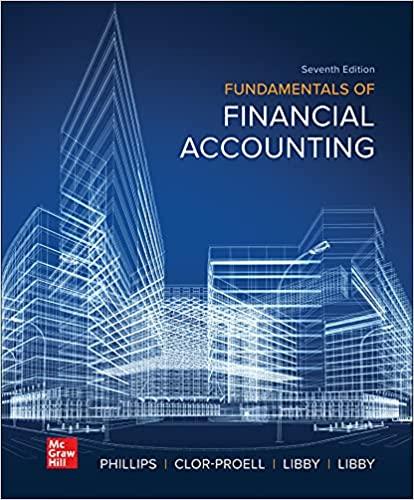Question
When the consideration receivable from an installment sale is discounted, the gross profit rate is computed a. based on the present value of the consideration
When the consideration receivable from an installment sale is discounted, the gross profit rate is computed
a. based on the present value of the consideration receivable.
b. based on the undiscounted installment sale price
c. a or b
d. none of these
2. When the consideration receivable from an installment sale is discounted, realized gross profit is computed
a. based on collections pertaining to the principal
b. based on the total collection during the period
c. a or b
d. none of these
3. Under the installment sales method, when merchandise previously sold is repossessed, the repossessed merchandise is recorded at
a. fair value
c. current cost
b. original cost
d. any of these
4. For purposes of applying the installment sales method, "fair value" is
a. the appraised value of the repossessed property or traded-in merchandise
b. the estimated selling price of the repossessed property or traded-in merchandise less reconditioning costs and normal profit margin, at date of repossession or date of trade-in.
c. a or b
d. none of these
5. Gain or loss on repossession is computed as
a. the fair value of the repossessed property less the sum of the balance in deferred gross profit and the balance in the defaulted installment account receivable
b. the sum of the fair value of the repossessed property and the balance in the defaulted installment account receivable less the balance in deferred gross profit
c. the difference between the fair value of the repossessed property and the balance in deferred gross profit
d. the sum of the fair value of the repossessed property and balance in deferred gross profit less the balance in the defaulted installment account receivable
6. Merchandise received as trade-in is recognized at
a. fair value
c. current cost
b. original cost
d. any of these
7. Under an installment sale where merchandise is received as "trade-in,"
a. the fair value of merchandise traded-in is considered as part of collections when determining the realized gross profit in the year of sale.
b. the trade-in value of merchandise traded-in is considered as part of collections when determining the realized gross profit in the year of sale.
c. neither the fair value nor the trade in value affects the computation of realized gross profit. d. none of these
8. The excess of the trade-in value over the fair value of a traded-in merchandise in a sale accounted for under the installment sales method represents
a. over allowance
c. no allowance
b. under allowance
d. small allowance
9. Under the installment sales method, an "over allowance" is
a. treated as addition to the installment sale price when computing for the gross profit rate.
b. treated as reduction to the installment sale price when computing for the gross profit rate. c. not accounted for
d. none of these
10. Under the cost recovery method,
a. the initial collections on the sale are treated as recovery of the cost of the inventory sold. Thus, no gross profit or interest income is recognized until total collections from the sale equals the cost of inventory sold.
b. the initial collections on the sale are treated as recovery of the cost of the inventory sold. Thus, no gross profit is recognized until total collections from the sale equals the cost of inventory sold. However, interest income may nonetheless be recognized.
c. a or b
d. none of these
Step by Step Solution
There are 3 Steps involved in it
Step: 1

Get Instant Access to Expert-Tailored Solutions
See step-by-step solutions with expert insights and AI powered tools for academic success
Step: 2

Step: 3

Ace Your Homework with AI
Get the answers you need in no time with our AI-driven, step-by-step assistance
Get Started


